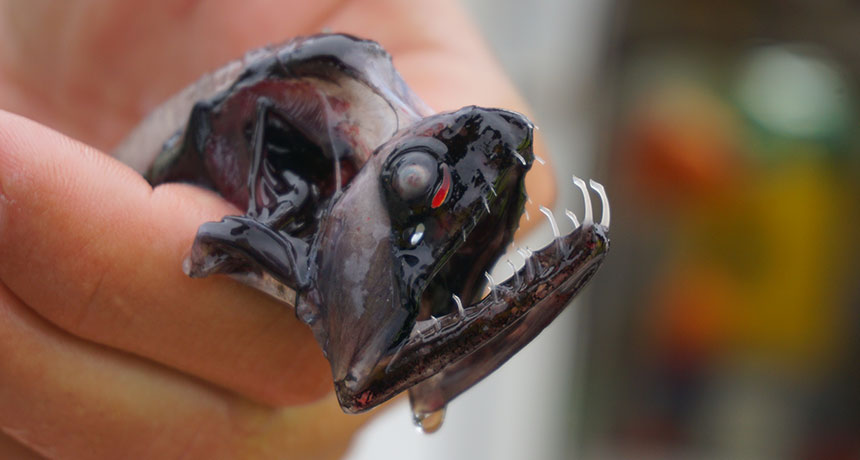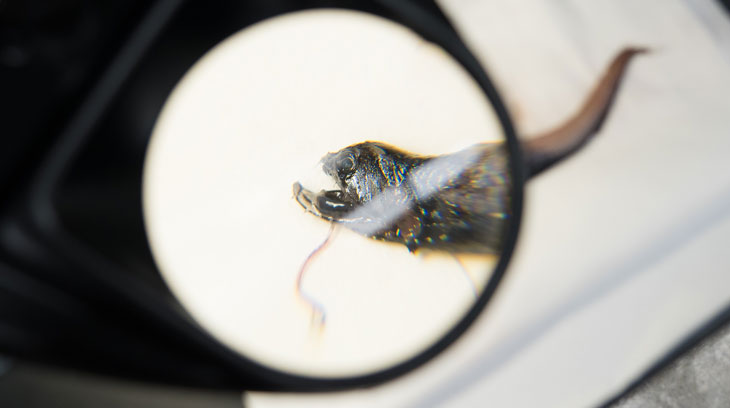Tiny structures in dragonfish teeth turn them into invisible daggers
The translucent chompers probably help surprise prey

FREAKY TEETH The spearlike teeth of deep-sea dragonfish are translucent, thanks to nanostructures that allow more light to pass through.
Audrey Velasco







